Virginie Surdej shoots b&w for Luka
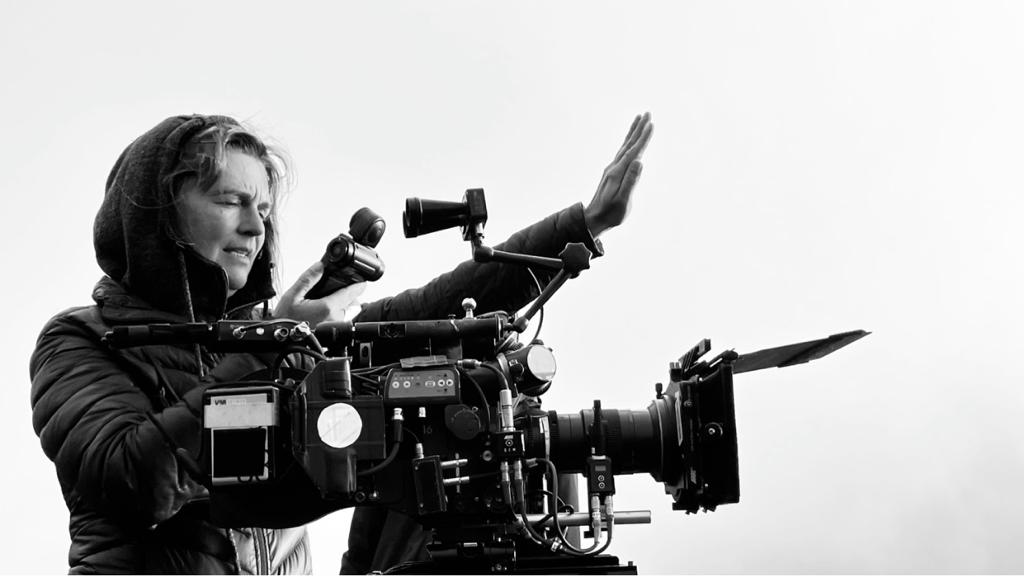
Jessica Woodworth’s film tells the story of Luka, a young and ambitious soldier, who embeds himself in the legendary Fort Kairos where heroic warriors defend the remains of civilization. His hopes to serve as an elite sniper are crushed when he is assigned to maintenance and must submit to the code of Kairos: obedience-endurance-sacrifice. As he rises through the ranks, Luka finds joy and strength in friendships with Konstantin, an enigmatic radar engineer, and Geronimo, a light-hearted private.
The evocations of profound solitude, the engaging hero, the sheer absurdity of waiting endlessly for an enemy to appear and the magnitude of the landscapes offer the core ingredients. The protagonists inhabit a run-down military-industrial complex, Fort Kairos, that serves no obvious purpose. Stretching northwards are mountains of ash that harbour their deepest fears and hopes. They are all held hostage by illusions and to the march of time that renders their existence increasingly absurd. Beautifully captured in black and white by DP Virginie Surdej, Luka is inspired by Dino Buzzati’s classic novel Il deserto dei Tartari (The Tartar Steppe).
Surdej studied at INSAS in Brussels, the Belgium Nation Film school before studying at Lodz Film School in Poland. “I graduated from Insas when I was quite young and I was eager to study more. I am more than half polish and so I was very happy to go to Lodz and live in Poland for three years,” says Surdej.
Christopher Doyle and Wong-Kar Wai’s movies were early influences for Surdej. “There is so much music, poetry, color, freedom and invention in what they did at the time. I also like Sven Nykvist, Nestor Almendros, and Ed Lachman. These DPs that worked with natural light and mastered it. I like to work with natural light and have it as a reference and don’t feel the artificiality of the light. I like the work of Hélène Louvart and I also I think she has a very interesting and rich filmography. More recently I follow the work of Robbie Ryan. It changes. You always discover new ones,” she details.
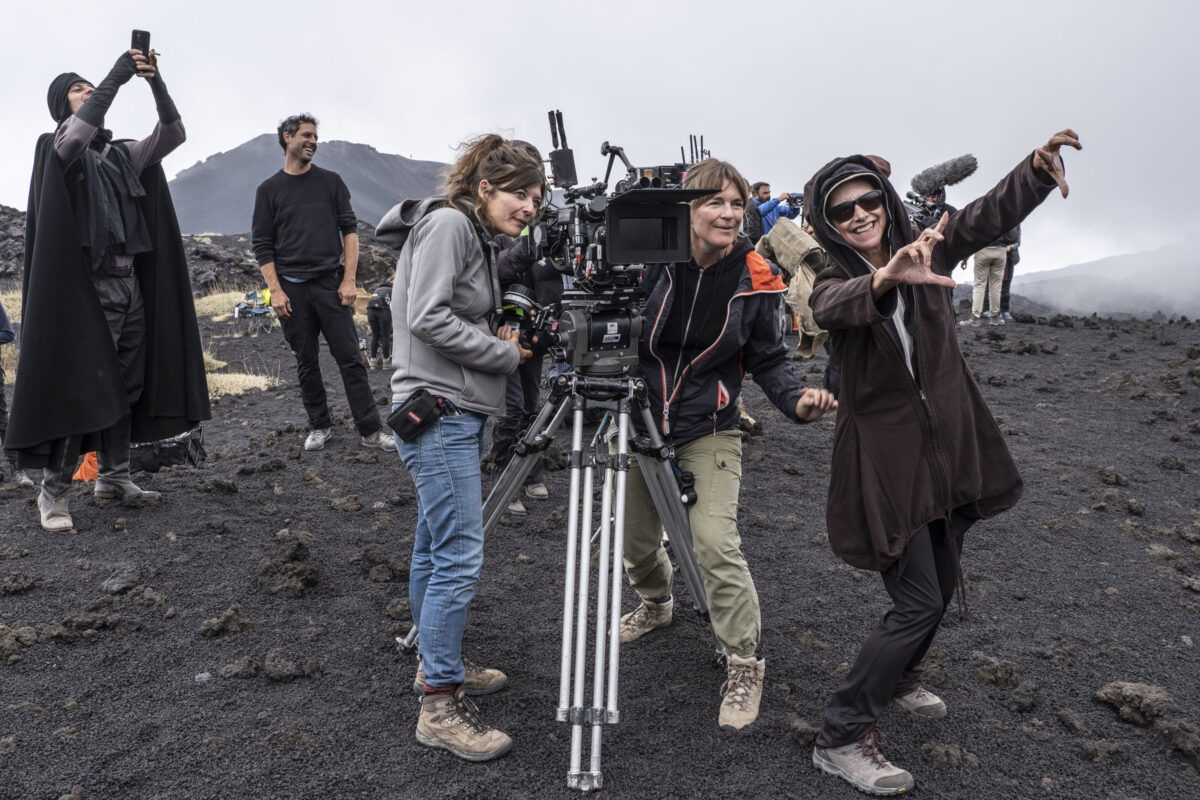
Surdej met director Jessica Woodworth long before shooting Luka. “In Belgium everyone sort of knows each other. She talked to me about her movie and we went on exchanging about this movie and this became our collaboration and it naturally evolved into working with each other,” Surdej notes. “We met with Jessica regarding this project and also just to meet. Our preparation process was happening during Covid. It was a long exchange time about the movie, about references and just sharing things.”
Surdej explains that Woodworth is a very visual artist and the spaces, the locations and space generally are very integral to her work. “Space, main locations really hold a role into the dramaturgy from very early on in this movie and all the other movies she co-directed with Peter Brosens,” says Surdej. “When she writes the script and re-writes the script, she always interacts with spaces, visual ideas brought by the discovery of possible locations. The locations in Luka are very special. She started looking for them very early on and to find the whole chemistry of this location – what would be the north, the fortress, inside the fortress and outside the fortress was a lengthy research process. The script is built and always evolves, even after she has found these locations. Finding the locations, the visual language and the visual identity of the movie happens very early in the process with Jessica. Sabina Christova , the production designer was also involved from the start. She does the same with music also and involves all the collaborators very early on. Finding the location to make this whole world one and that it connects in an organic way.”
“When I read the script the first time, there were beautiful black and white images on the script,” continues Surdej. “They were like key images taken by Jessica from the scout on locations where she thought we would shoot the movie… these locations were in Armenia. The script was written with theses very specific Armenian locations in her head. Then Covid happened, as well as the war in Armenia. So, it was nearly impossible to shoot there during that period at that specific time. The film is also an adaptation of Dino Buzzati’s novel The Tartar Steppe. It is very famous classical Italian book and she had heard of theses possible locations in Sicily so she started looking there. She found possible locations in Sicily with a strong visual and narrative potential. Italy came in also as a co-production partner so the whole production was moved from Armenia to Italy. The whole visual process had to be built up from scratch. So the biggest references and sources of inspirations are the locations I would say but we exchanged many images taken by photographers who worked mostly on black and white, film references, paintings etc…”
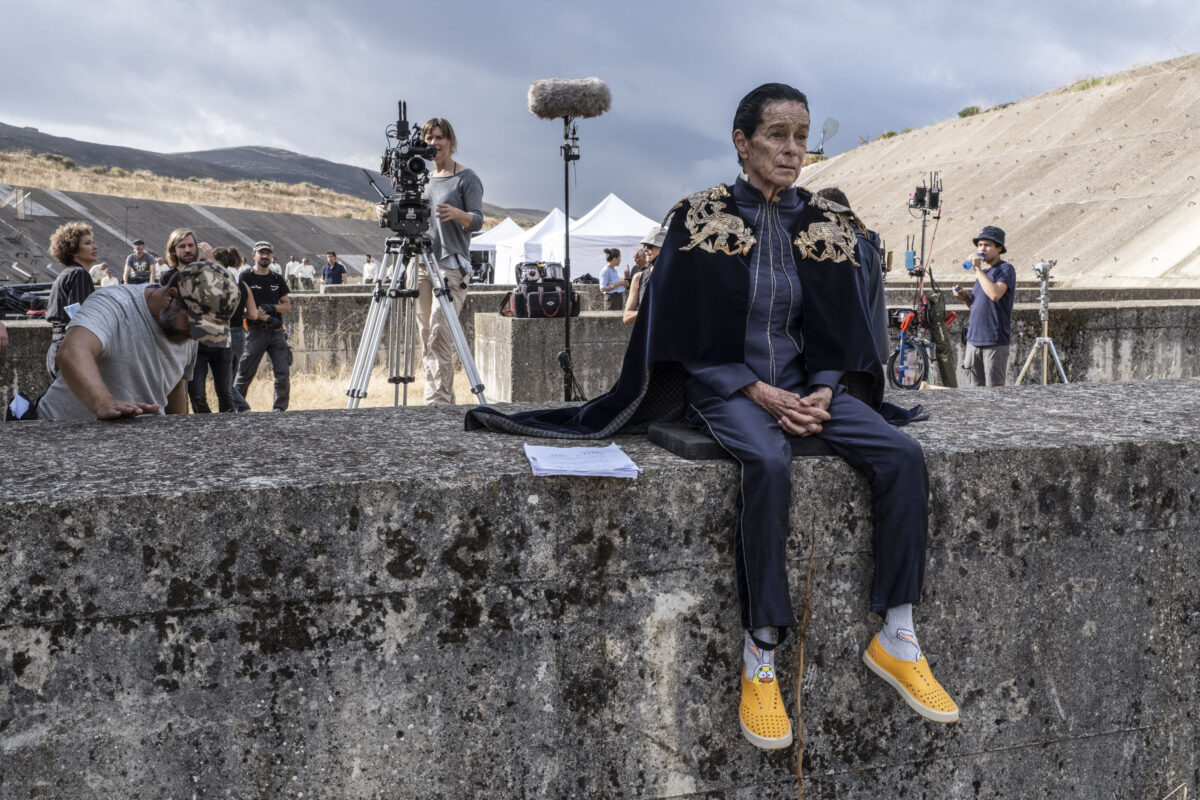
It was decided early on in the process that the film was going to be captured in black and white. “The story of Luka takes place in a dehumanised world where much of life has disappeared. Black and white brings you straight into a specific relation to time and takes you out of your time,” Surdej explains. “The idea was not to have a soft, flat black and white but a Black and White where we push the contrast, that allows us to travel from the deep shadows to extreme brightness and play with all the graphic and pictorial possibilities specific and unique to black and white photography. For instance the work on the black silhouettes of the black hawks characters against bright skies, and the variations of having theses black Hawks on other backgrounds. Or in an opposite way the brightness of Luka’s skin, and Lukas’ body on a very dark background. This black and white gives you many possibilities to step out of reality and bring to the film a poetic abstract metaphoric resonance.”
Surdej shot Luka on film, super- 16mm and did tests very early on to be sure that it was the right look, resolution and texture. “We tested black and white, and color film stocks as well. We were really supported by Peter Brossens, the delegate producer in our research process and got the chance to make tests with theses film stocks on location. We opted to shoot in color in the end for the higher sensitivity and as the black and white film stock had a lot of film grain in the bright areas of the images.”
Solitude, isolation and absurdity are key themes throughout the film. “We had to portray Fort Kairos, the army and its human hunger for power and authority, the High command, the sheer absurdity of our soldiers and our Hawks waiting endlessly for an enemy to appear, the feeling of time and then our Luka moving in this context,” says Surdej. “I could say that this static side of Fort Kairos is more illustrated by tableaux, wide static shot with a work on composition that tries to highlight the power, the mecanic of an army, its absurdity also. Theses shots are really pictorial tableaux, very precisely composed, locked and anchored in the ground on a tripod, in which the men’s bodies move mechanically to the whim of orders. The staging of theses shots is very precise a bit like the day life in an army.”
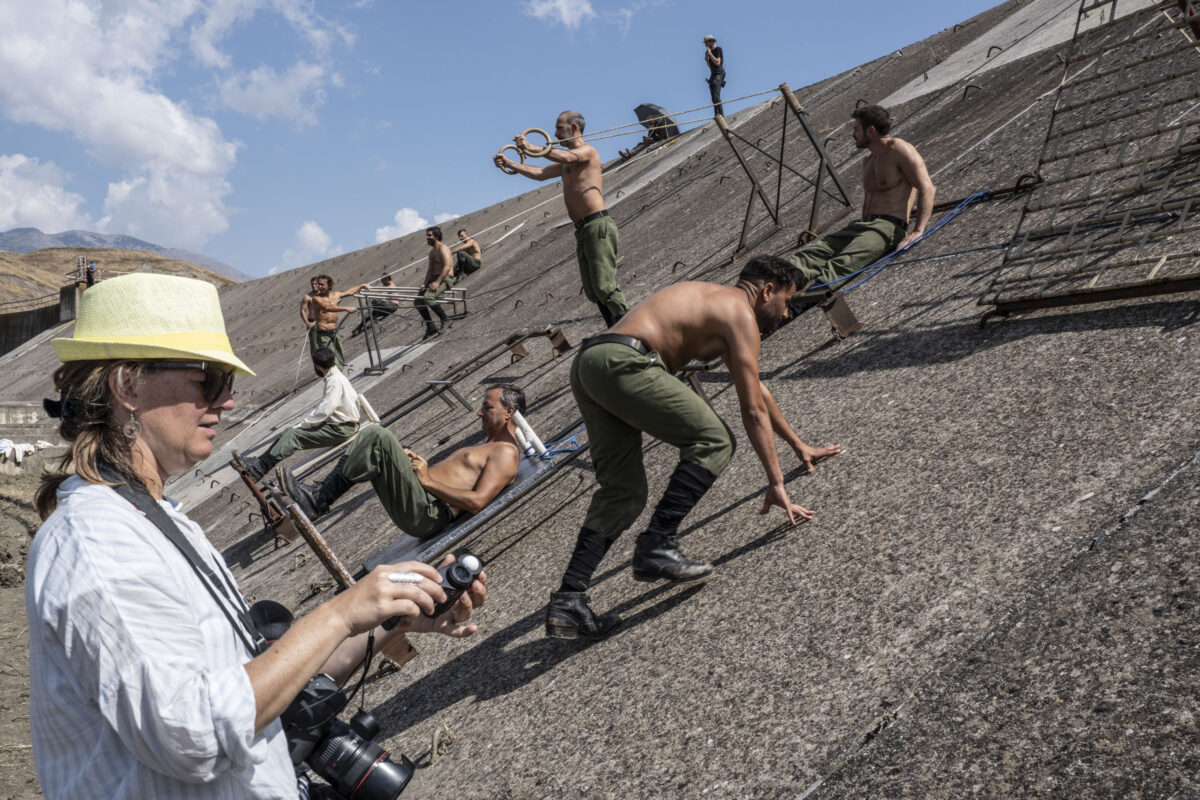
“Then there is how we portray our main character Luka in this world and his interiority,” adds Surdej. “There is this bubble of freedom in the fortress created by Luka and Luka meeting the other two young guys. This more organic feel of energy brought by Luka’s presence, the freedom of his soul, the bodies of men and sensuality of movement will be pictured more through Steadicam (performed by Jorrit Haas) or through handheld camera work, sometimes very long master shots. Some of theses scenes were very improvised and the camera would follow this deep need of deliverance and freedom. In a way, the camera follows two different energies and the film plays on this contrast and interaction. On one side we have a very static, controlled, graphic and composed frame of Fort Kairos in which we’ll follow with a fragile, free, intuitive and less controlled camera work the spirit of our main character Luka and the need for deliverance and freedom for the bodies of our men.”
Surdej and her team had to approach and think about lighting the film in black and white. “Lighting to me comes from story, space, relation to time,” Surdej notes. “You have this fortress outside with the heat and the sun and the white sky. You have the fortress inside which was a labyrinth of caves that were around 50 meters high. Then you have The North that we shot on the Etna, with its black earth and cloudy skies. Theses were our ingredients. We built the interior of Fort Kairos inside caves that were sometimes so far from the light, it was like the darkness in a utero. We wanted to keep this feeling of darkness and this relation between darkness and the darkness of human beings in contrast with blinding exteriors. Light there can only come from a whole, an opening close or far away where light travels through the reflexions of the walls and/or from some practical lighting used by our men. We wanted to stay organic, not feel any artificiality and give a timeless feeling.”
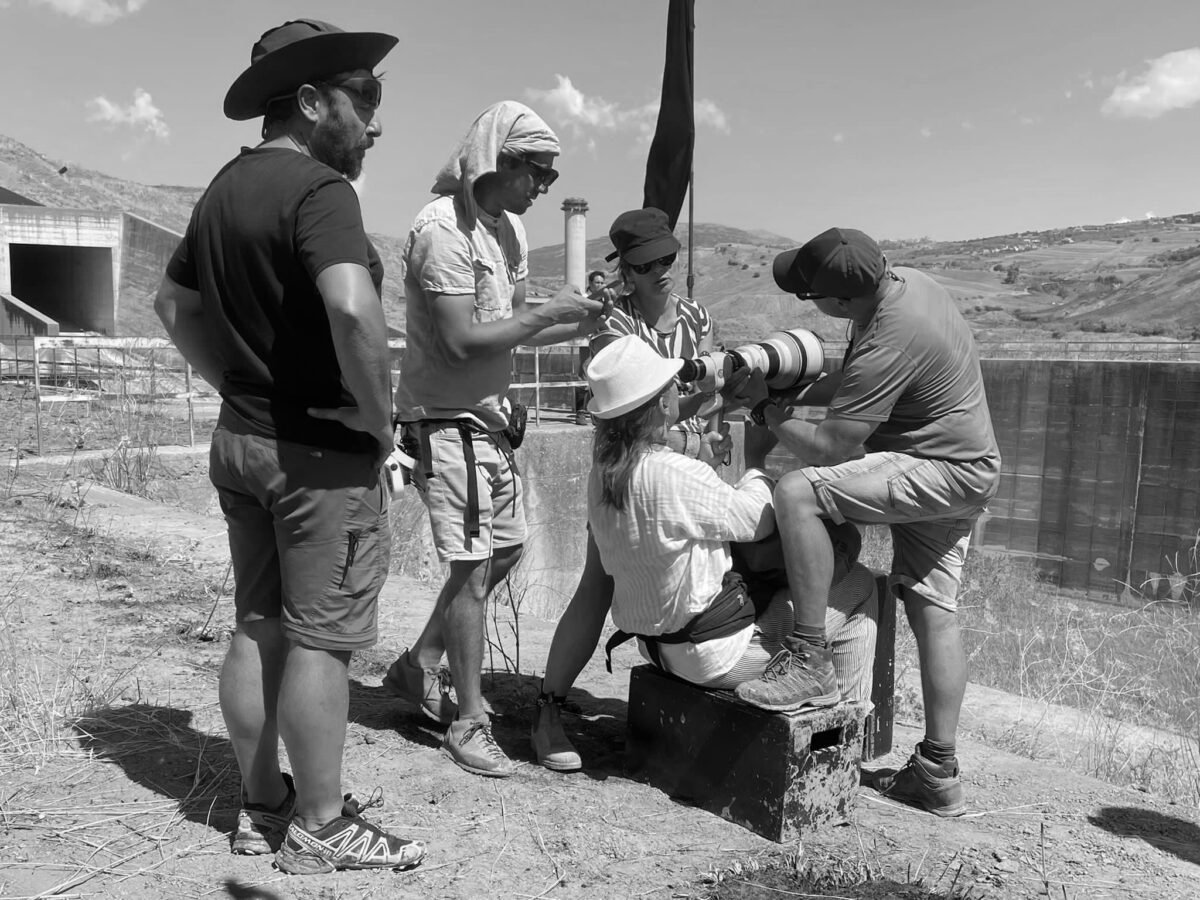
Lighting a number of locations proved to be particularly challening for Surdej and her team. “Some of our scenes were placed closer to the entrance of the caves (the gathering scenes/ ceremonies/dining table), some other were much deeper (High Command/ beds/Gaston’s atelier)… All caves were extremely huge, and high and they would make human very small in scale and we wanted to keep that feeling. Our light sources therefore had to be quite huge to be able to embrace theses spaces. Our budget was tight and with gaffer Tim Janssens we opted for older light sources as tungsten Dino’s softened or bounced…sometimes on CRLS, 2K blondes, older neon banks. As we were in black and white, we didn’t care about the colour of our light sources. The dining table was close to the entrance where there was a big opening towards the light, it naturally came just from one direction. We wanted to keep this one direction feeling of light for the contrast and the pureness. We relied on these big openings to build our lighting. Our main lights there coming from outside were 2 Dino 12K placed on cherry pickers with 4×4 screens in front of them in order to diffuse and keep this softness. We had a soft top light over the table as well. Then quite often we had a vortex with an octa 5 to enhance close-ups.”
Surdej tested practical lighting with Sabina Christina, the production designer. “It would bring a reference of a time period because of the technology used and we wanted to stay very abstract regarding that. So we eventually played with torches but tried to film them so it wouldn’t give you a specific reference to time or a certain technology. One of the spaces where you feel that you have practical lighting that belongs to the space was Gaston’s atelier. It was more a cave/atelier lighting so we opted for a soft top light, we used old kinflos and PLL tubes, with black skirts around them. Then for the high command, we wanted a religious feeling of light. We opted for a top light with a more clear direction. The ceilings were extremely high. On top of our main table we had a couple of neon banks, surrounded with black skirts and a homemade snap grid, some par cans that would give a strong zenithal direction to the light, hit the table…and we’d use this reflection to light our main caracters,” says Surdej.
Surdej enjoyed the overall experience of working with an international cast. “Jessica is a very international person as she grew up in many countries and has a natural talent for bringing people from different cultures together and unite their talent. Of course, you will always have different rules and different ways to do things, but I think if you step in with openness then it’s extremely rich. Everyone has different habits and these different habits make everyone richer if you step into this with this approach. I often work with films that are co-productions, where you have three or four different countries behind it and I would say most of the time people enjoy it. You have lost in translation happening sometimes, but once you find a way to communicate and share then it’s very rewarding and rich,” she explains.
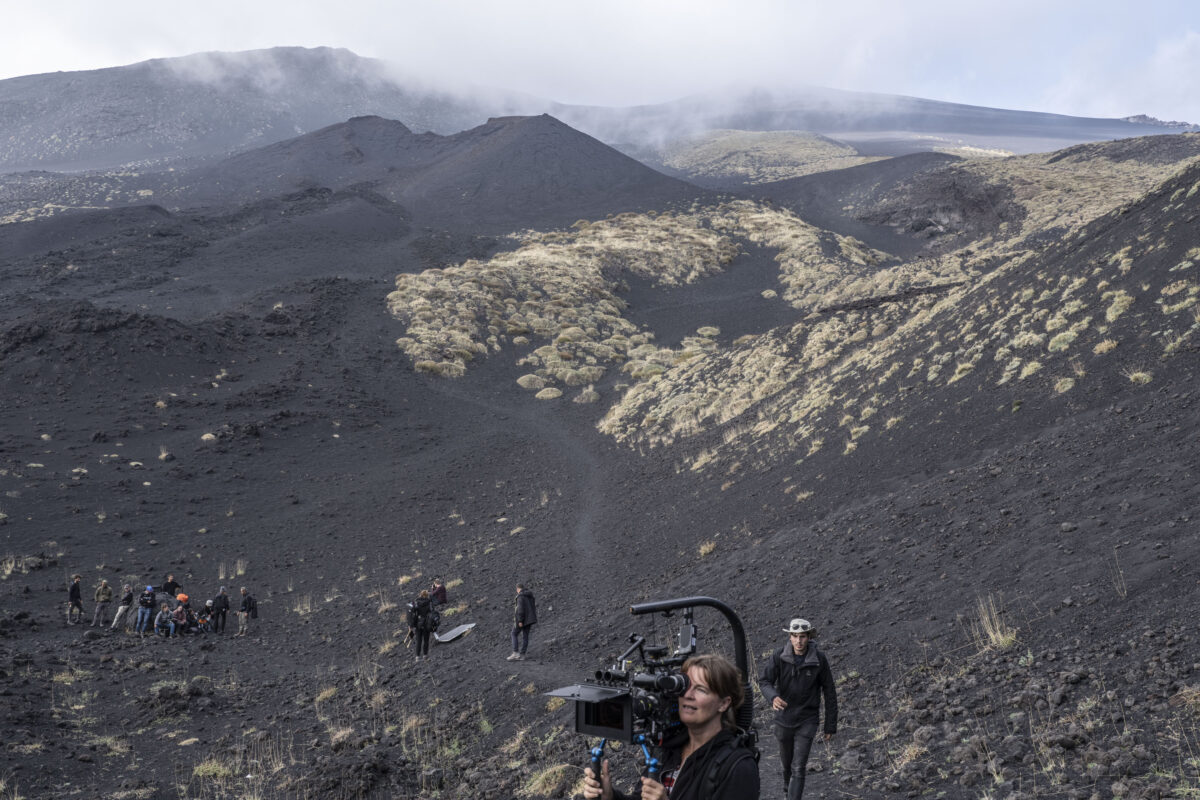
The shoot lasted for 33 days in Sicily and there were three main locations: the Melili caves, the Damn (Diga), and Etna, as well as a small fourth location for Radar. “I enjoyed every single part of working on this film, I think to work on this film was amazing for every department. You have some directors who are more focused on acting, or more realistic movies. Jessica really thrives with images and sounds and she likes to invent worlds. She invites people very early on in the process to shape this world and to find its language in a long work-in progress process. To find this fortress world was very amazing,” Surdej concludes.
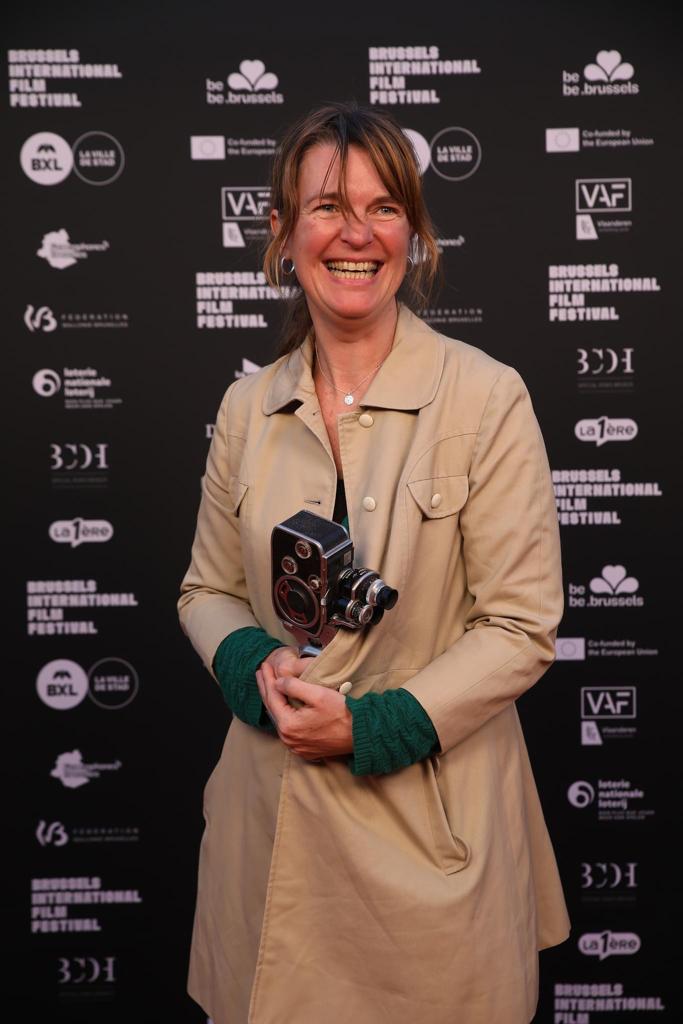
Virginie was awarded best cinematography at the Brussels International Film Festival (BRIFF) in 2023.
By Oliver Webb
Set pictures by Carl Dekeyzer and Sabina Christova.
